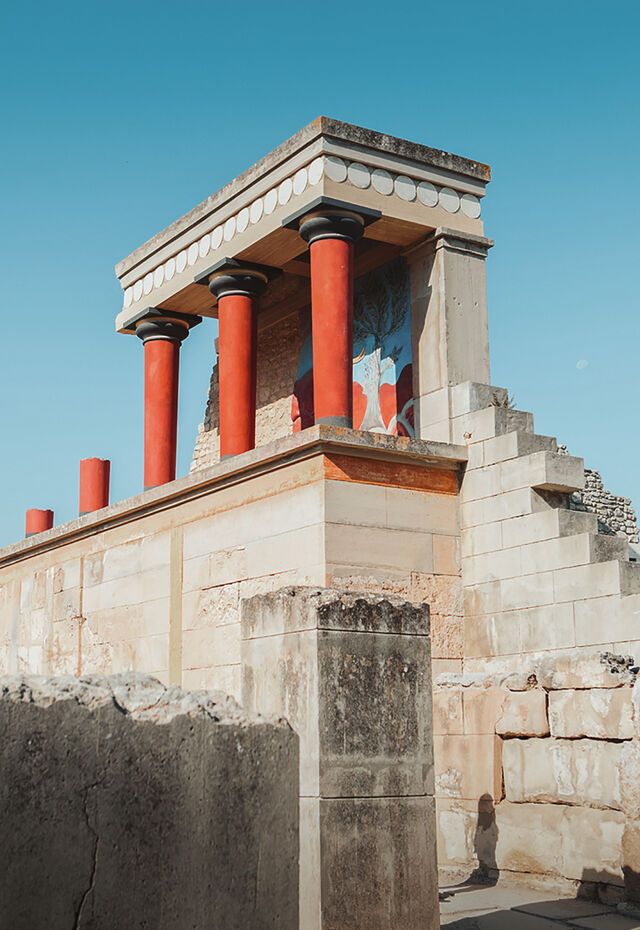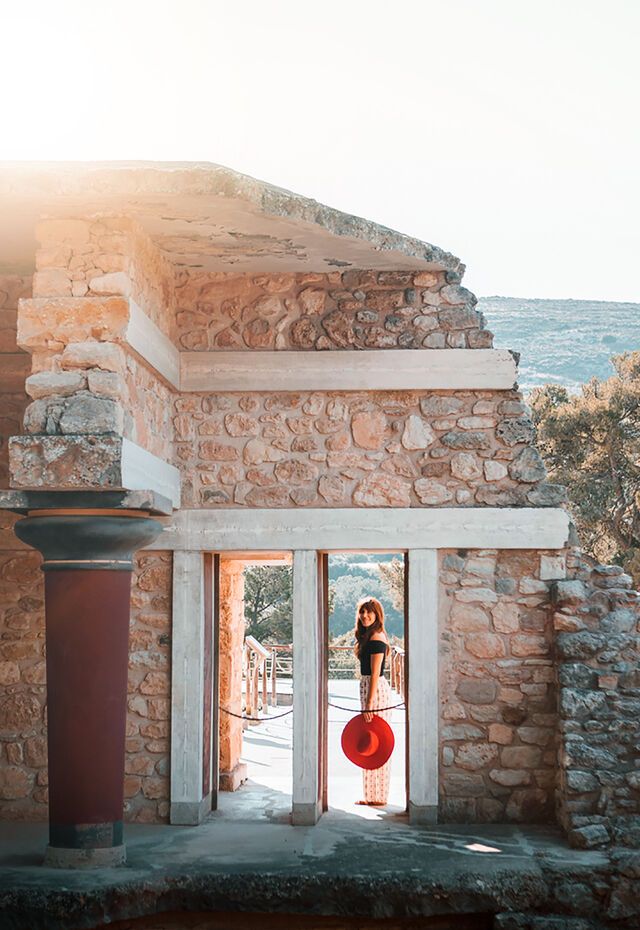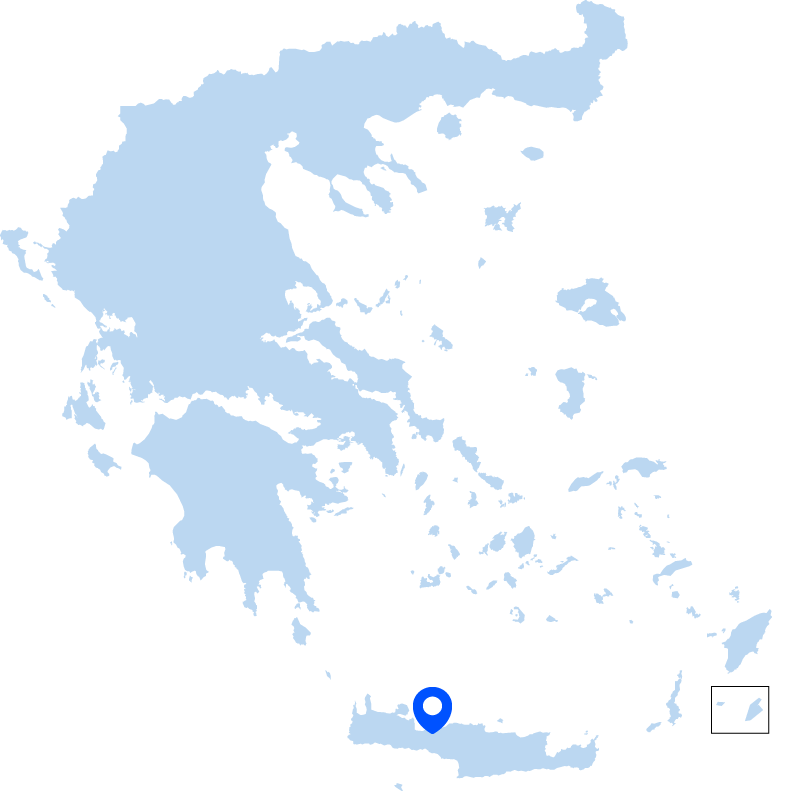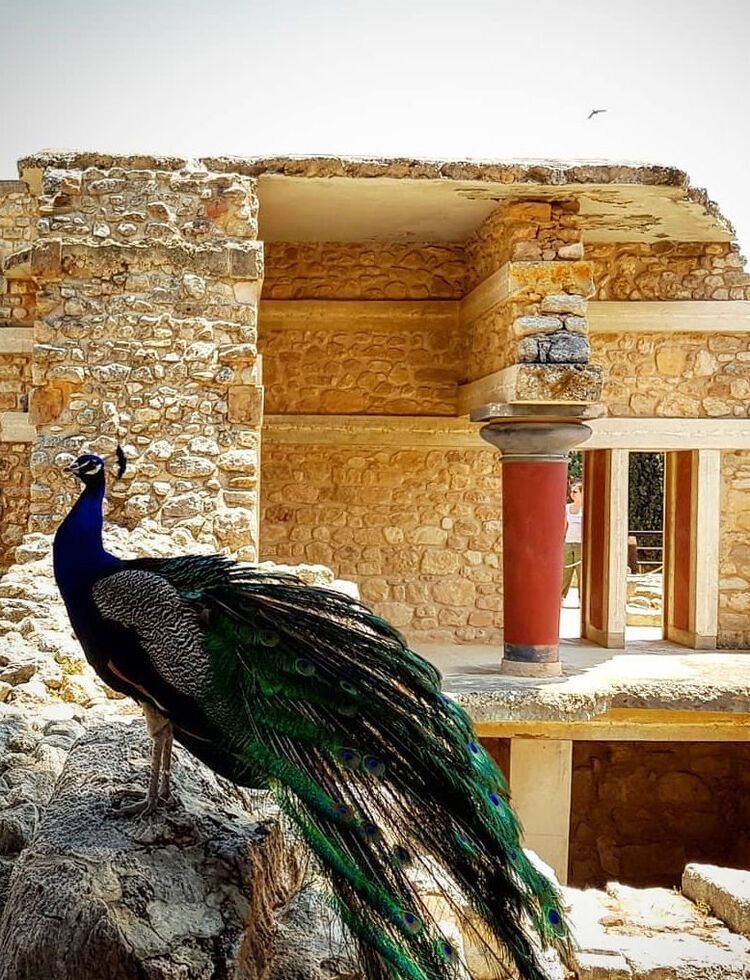

OVERVIEW
A tour of Knossos Palace in Crete
You travel to the very depths of European history and mythology when you visit Knossos Palace, just outside Heraklion, the capital of Crete. This was not only the site of Minoan Crete’s grandest palace but also where the legendary King Minos is said to have built the labyrinth to contain the deadly Minotaur. That is until it was killed by the heroic Theseus who escaped back to Athens with King Minos’ daughter, Ariadne.
Walking around, you will be struck by the sophistication of a civilisation that reached its peak 4,000 years ago. The drainage system is intricate and some houses were so grand that they rose up to five storeys in height. Public and private spaces were adorned with ornate frescoes, pottery and wall paintings. In fact, some of the Minoan artwork is so iconic that it continues to inspire artists today.
From the excavations of British archaeologist Arthur Evans at the turn of the 19th century, you will learn that this was actually the second Minoan palace on the site, replacing an earlier palace destroyed in an earthquake on the island of Crete in around 1700 BC. Another earthquake eventually led to this palace being abandoned, though not before becoming established as Europe’s oldest city.
Knossos Palace is big and sprawling (43,000m2), once containing 1,300 rooms connected with corridors around a main courtyard. So the best way of exploring it and understanding its secrets is with a licensed guide.
DON'T MISS
Highlights of Knossos Palace
Remnants of a royal residence
To the east are the once-lavish royal quarters and workshops and to the west the Propylon and Facade and the Little Palace. You’ll find the shrines, storerooms and banquet halls of the palace as well as Knossos Palace’s all-important Throne Room, the oldest in Europe.
A window into everyday Minoan life
It is in the details of everyday life that Knossos Palace tells perhaps its most revealing stories about Minoan Crete. Look out for the irrigation drains, terracotta pipes and cisterns for drinking water. The entire palace is said to resemble a labyrinth, which some say led to the link with the Minotaur and Theseus.
Iconic frescoes and artwork
To the northwest, you will find the House of the Frescoes, adorned with artwork on the walls and the Villa of Dionysos, a private residence decorated with splendid mosaics. But the most famous artwork of Knossos Palace (and amongst the best-known of Bronze Age history generally) is without doubt the Bull-leaping Fresco and Leaping Dolphins decorating the Queen’s Megaron.
The Archaeological Museum
To get the full experience, you should also visit the Archaeological Museum of Heraklion to view other artefacts unearthed in the palace, including pottery, wall paintings and figurines. Highlights include the Linear B tablets (with a text that predates the Greek alphabet), the Bull Leaper’s fresco and the Bull’s Head rhyton.
GET PLANNING
-
How do I get to Knossos Palace from Heraklion?
You can reach Knossos Palace by car or taxi in around 15mins from Heraklion (6km). Alternatively, catch the No.2 bus (‘Knossos’) from near the Archaeological Museum of Heraklion.
-
How do I get to Heraklion?
If you are travelling from Chania (142km), take the bus (KTEL) to Heraklion or go by car. Likewise, if you are staying in Rethymno (82km) you can reach Knossos by KTEL bus or car.
-
When is the best time to visit Knossos Palace?
You can visit the Palace of Knossos – and the island of Crete – at any time in the year, but you will enjoy it most in spring and autumn, when the weather is milder and there are fewer people. Keep in mind that seasonal opening times apply.
Discover Greece tip: If you go in July and August, morning or late afternoon is best.
- Autumn
- Spring
- Summer
- Winter
-
How long does it take to visit the Palace of Knossos?
You can cover the palace in around 1hr 30mins, which is also the length of most organised tours. Of course, if you want to explore more thoroughly, you will need longer.
-
How much do tickets for Knossos Palace cost?
Tickets are €15 per person and the reduced price is €8.
Discover Greece tip: By booking a guided tour, you can also benefit by skipping entrance queues, which can be quite long in peak months.
- You will find all the basics (snacks & drinks, toilets) close to the entrance.
- There’s little shade and the palace is expansive so don’t forget your hat, sunglasses and sunscreen and bring a water bottle.
- Wear comfortable footwear.
- For visitors with disabilities, there are facilities including parking and toilets. Most of the site is accessible, but not all of it.
- You can book an organised tour of Knossos with Cretan Guides.



